Bullet Journaling Tips
February 28, 2018
Photo Credit: Tabitha Rucker/Achona Online
Stickers, magazine cut outs, and drawings can be a fun way to decorate and customize your bullet journal.
Bullet journaling is a creative way to keep track of one’s daily life. A bullet journal can be used as a diary, planner, event tracker, sketchbook, and more. What makes bullet journaling so unique is that it is completely customized by the writer. Freshmen and Sophomore English teacher Alison Jussaume began bullet journaling back in September of 2017.
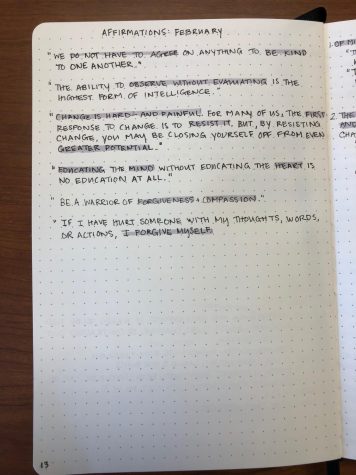
“I like being able to customize it to what I need and I like challenging myself. I don’t really consider myself an artist, per say, but just being able to practice drawing and layouts along with handwriting has been fun. It’s been something that’s not a chore for me, I really enjoy it,” Jussaume said.
Jussaume said, “I’ve always loved paper products, pens, and planners, but I realized I was buying two or three planners a year just because they didn’t suit what I need them to do. So for my bullet journal, I have everything in it. I separate school things from home things but everything is in one place instead of having a planner for school, a planner for home, a journal, a writing notebook. I have it all in one place which is much easier for because I appreciate a minimal approach and a minimal things to keep track of so I don’t lose things.”
Elena Schillinger (’18) also enjoys bullet journaling and is very proud of he bullet journal. Schillinger says, “Seeing people on Pinterest was where my initial interest came from but then I realized that the reason I never use a planner through the whole year was because it gets boring and never fits right for what I need. Bullet journaling gives me a way to change up my planner as much as I want and make it exactly what I need. It was a pretty easy decision to start.”
While there is no perfect way to bullet journal, here are a few tips one should know about bullet journaling:
- The “right” bullet journal
Stores like Amazon.com, Barnes & Nobles, Bulletjournal.com, and Target sell different types of bullet journals. A few things to consider when looking for a bullet journal are: hardcover journals vs softcover, preference of lines or no lines and grids or no grids, page number count, and the size of the bullet journal.
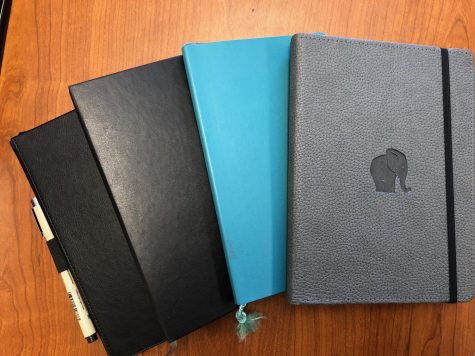
Senior English teacher Virginia Pendleton says, “Well I love my journal, because it looks aesthetically pleasing. I bought the journal to help keep me organized and stop procrastinating. Unfortunately, I have yet to actually start the bullet journal, which I guess defeats the initial purpose. I’ve watched quite a few videos thanks to Tabitha Rucker but I’m scared to commit for fear I might mess it up. Did I mention it was pretty?”
- Keys
Keys are set symbols a person uses throughout the journal. For example, an asterisk (*) can represent important events, a plus sign (+) for birthdays, or a box (◻) for to do lists. Keys are not necessary for bullet journals but can be easier to identify events based on the symbols used.
- Spreads
A spread is a layout of two open pages. Spreads are the basis of every bullet journal and there are an endless amount of choices one can create on each page. Pinterest has many spread and other layout ideas.
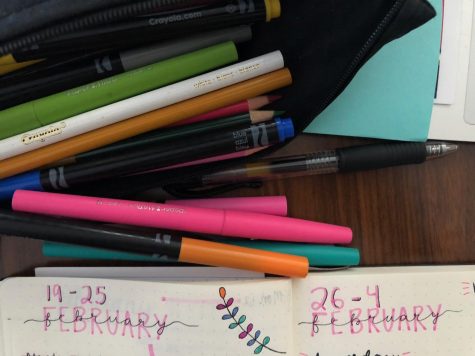
Jussaume says, “On Youtube and Instagram there’s a lot of different bullet journaling accounts and you can usually find something that’s your style and you can follow them.”
- Creativity
“You can have it be fun and have it be relaxing- treat it as an experiement. Don’t worry about it being too perfect either. I think on a lot of bullet journaling Instagrams you think “Oh I could never write or draw like that” it doesn’t have to be like that. It can be something that’s for you so just kind of tailor it to your own needs,” Jussaume says.
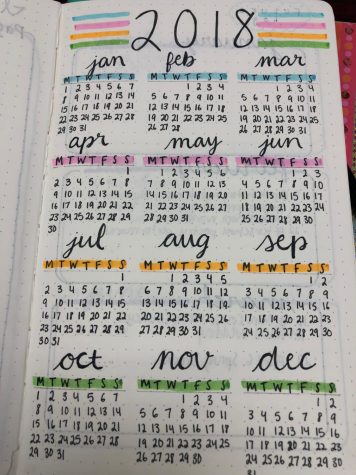
Most bullet journals begin with a spread called “This year at a glance” which consists of all of the months of that current year.
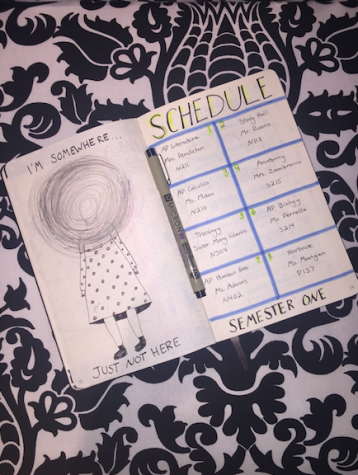
“I use mine primarily as a planner. Each week has a spread where I write all of my homework and tests and activities so I can stay organized throughout the week but I also like that I can make it creative. I really like doodling and making small pieces of art. Also, it’s the perfect break from homework because I still feel productive drawing out my next weekly or monthly spread,” Schillinger said.


Alison Jussaume • Feb 28, 2018 at 7:27 pm
Tabitha! Thank you for featuring bullet journaling in our school newspaper. It’s a lot of fun, and I’m glad to see I’m not the only one who loves stationery supplies!
Mrs. J